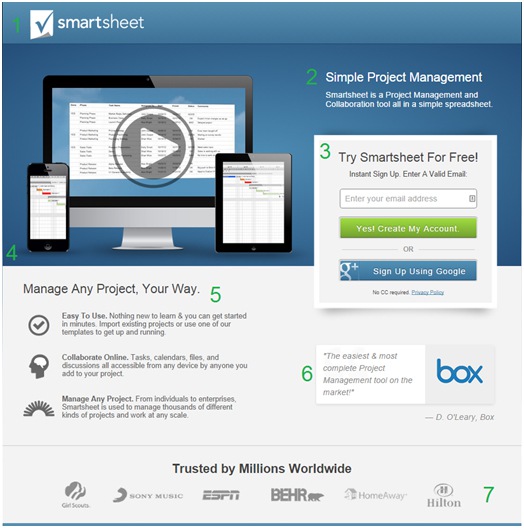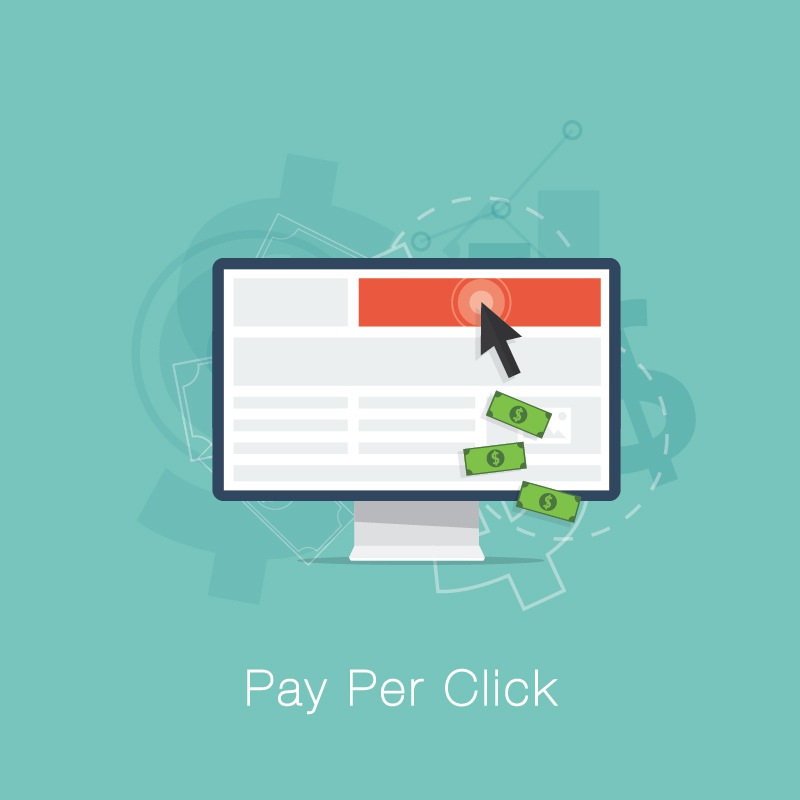Before we get started, allow me first to make a necessary—albeit dangerous—assumption: If you’re reading this you have at least a cursory understanding of how to setup and run a targeted pay-per-click campaign. If that isn’t the case it might be worth spending some time in Search Engine Journal’s handy-dandy paid search 101 library.
Otherwise, let’s begin…
Strategy Before Tactics: Why Paid Traffic is Special
As with all forms of marketing, it is of the utmost importance to consider your buyer persona before building any type of campaign. With that said, let’s discuss what makes paid traffic unique.
Paid traffic is a very different type of traffic than organic search or referral traffic; this is true both anecdotally and statistically. Anecdotally, consider the mentality of a user who is clicking on advertisements instead of organic listings. Organic listings by nature are far more information-centric and feature due diligence heavy, top-of-the-funnel type content. This is due largely to the emphasis Almighty Lord Google puts on the “thought leadership” approach to content marketing.
Contrast this with the call-to-action heavy content that is often featured in paid ad copy, and you can see the intrinsic value in the simple fact that a user is clicking on an ad to begin with. This is true whether or not the user understands the difference between paid and organic results.
In fact, 45.5% of people can’t identify paid results, and yet the fact that paid ad copy is exponentially focused on conversion enables marketers to make relatively safe assumptions about where a user is in the buying cycle. Simply stated, top-of-the-funnel users want information while bottom-of-the-funnel users are more likely to succumb to special offers, value propositions, and conversion prompts.
Statistically paid ads account for 64.6% of high commercial intent keyword searches. This is an interesting point when you consider 85% of clicks resulting from a search are on the organic links rather than paid ads. This means users at the beginning of the sales cycle are far more likely to click on an organic listing as they perform their due diligence. But, as these users travel down the sales funnel, their search terms will begin to narrow as they move from information gathering to purchase decision.
To further illustrate the efficacy of paid traffic, note that 50% of users who arrive from paid ads are more likely to buy. This means paid traffic is not only more likely to yield users with high commercial intent, but also carries a greater probability of conversion.
I make these distinctions to illustrate the point that paid users should be treated much differently than organic users. These users are in a completely different phase of the buying cycle, are more valuable from a “convertability” standpoint, and have a shorter shelf life for nurture since they’re prepared to make a purchase decision.
So how do we take these valuable (and expensive) users and ensure the greatest level of conversion? I’m so glad you asked…
What is a Landing Page?
Technically speaking, a landing page is any page that a user can arrive or “land” on. However, in the context of online marketing the term “landing page” refers to a web page separate from your main website and designed for a single objective.
The rest of your web application more than likely features things like robust navigation, links to additional content, resources, frequently asked questions, blog feeds, news and events, social CTAs, etc.
Landing pages, on the other hand, focus on a singular vision. Everything on a landing page is meant to support a focused initiative and should not distract from the ultimate goal of converting a user. Simply stated: Your landing page should be about one thing—one product, one service, one offering, one download, etc.
The Components of a Landing Page
The vast majority of landing pages follow a very consistent formula which, of course, can be modified depending upon the goals of your targeted PPC campaign. Here’s an example of a fantastic (and best practice compliant) landing page from smartsheet.com:

Branding Continuity
Smartsheet has done a good job at capitalizing on existing brand recognition as well as ensuring the user experience is a seamless transition from research to purchase decision by maintaining continuity with their website.
While the landing page is a small departure from their website’s general theme the colors, logo, and layout are close enough to ensure recognition and an easy browsing crossover for users who have previously been on the site (or plan on visiting the site to perform further due diligence).
Clear and Descriptive Page Title
The page title “Simple Project Management” is as clearly stated, while the sub-title “Smart sheet is a project management and collaboration tool all in a simple spreadsheet” explain exactly what the offering is in simple terms.
Prominent, Singular Conversion Point
There’s only one possible action to be taken on this page, which is completing the sign-up form. Another important note is the simplicity with which smartsheet has allowed an account to be created. They have removed as many barriers to entry as possible in order to ensure a low bounce rate and high conversion rate.
Media-Based “Hero” Pitch
Remember, videos can improve conversion by up to 80% and people who view a web video are 64% more likely to purchase. This makes having a video extremely important if not essential to landing page optimization. The video used on this page is also an excellent example of conversion optimized media as it quickly explains the value proposition and includes a clear call to action that is consistent with the rest of the page.
Value Proposition and Offer Details
The page copy is clear, concise, and laid out in a bullet pointed format that helps increase the page’s browse-ability. Generally speaking, users at this stage of the buying cycle are more interested in facts and practical application than large blocks of content. Utilizing icon-based bullet points also assist with engagement as well as visually communicating the concept. In some cases (depending on the offering) tables, charts and comparisons are also well positioned content mechanisms for this specific use case.
Social Validation
The social validation employed here does a wonderful job of using the influence from a recognizable brand to build trust in Smartsheet. Even if you don’t have a big brand name backing you up, using social validation helps to qualify your offering.
Trust Building
Showing other brands that currently use Smartsheet is another way to build trust through social validation by illustrating how many organizations already trust Smartsheet for their project management needs. This builds trust by association, an approach also highlighted by utilizing the Google sign-up feature in the conversion form.
When discussing the components of a landing page, it’s as important to note what is not present. You’ll notice there are no menu items at all (this includes a footer menu). The purpose of this “dead end” navigation is to ensure the user isn’t distracted with ancillary and irrelevant content.
You’ll also notice there are no social media CTAs, which can be a distraction. There are also no off-page links to supplemental content or references. It wouldn’t be inappropriate to included a phone number in the top right hand corner of the page should the prospect prefer to speak directly to a sales representative; in this particular case it appears that approach doesn’t align with Smartsheet’s sales cycle.
Building a Narrative: Landing Pages in PPC Campaign Context
Remember, a landing page is not a stand-alone marketing tool meant as a “catch all” for traffic. A landing page, specifically in the context of a PPC campaign, is a part of a larger narrative.
The term “narrative” is a key point here because the pay-per-click campaign is exactly that: a linear storyline you create for your target prospects. Your narrative needs to make sense. If you don’t do a good job of connecting the dots within your campaign, you risk losing your users, the same way a movie loses an audience when the plotline becomes difficult to follow.
Generally, the pay-per-click narrative looks like this:  Here’s an example: Imagine you own a home cleaning company that offers a wide variety of services, one of which is carpet cleaning. If a user searches for “carpet cleaning services”, they are far more likely to click on an ad that speaks directly to “carpet cleaning services” than an ad that speaks to generic “house cleaning”.
Here’s an example: Imagine you own a home cleaning company that offers a wide variety of services, one of which is carpet cleaning. If a user searches for “carpet cleaning services”, they are far more likely to click on an ad that speaks directly to “carpet cleaning services” than an ad that speaks to generic “house cleaning”.
While both ads might yield results that will ultimately suit their needs, the more specific add is an easy stand out as it directly addresses their specific needs. This level of continuity needs to be maintained throughout the entire narrative.
- The user searches for “carpet cleaning services” and sees an ad in the search results that speaks directly to that specific service with a very clear call to action
- Clicking on the ad brings the user to a landing page that specifically mentions “carpet cleaning services” and includes a conversion point that also maintains an offer specifically tailored to “carpet cleaning services”
- Upon conversion, the confirmation page reassures the user with additional references to “carpet cleaning”
- Finally, the user receives an automated follow-up email the further cements the idea that “carpet cleaning” is a specialty – this completes the cohesive narrative.
Segmenting Your Landing Pages
While the development of key phrase groups is a discussion better saved for another article, it’s important to note that landing pages should speak directly to specific key phrase and ad groups. Attempting to send traffic from multiple key phrase groups to a single landing page will result in diluted relevance, a lower click-through rate and lower conversion rate.
With that said, take the time to build additional landing pages for each ad group as is necessary to maintain a highly consistent narrative throughout the entire process. Segmentation isn’t just about key phrases and ad groups, you can also segment according to a vast myriad of criteria. A few examples:
Segment by Demographic
The key phrase “carpet cleaning services” can yield a myriad of results based upon the ad copy. Let’s assume you have an ad that offers a special promotion for homes over 2,000 square feet and a second ad that offers 15% to new users. Each ad is directly relevant to the key phrase, but a single landing page wouldn’t be sufficient to accommodate both ads. You’ll need to build a landing page for each ad (or ad group) and direct traffic to the respective landing pages accordingly.
Segment by the User’s Phase in the Buying Cycle
The same way your ad copy can speak to varying demographics, it can also speak to users at various stages of the buying cycle. You might be advertising to users who have never tried your service before as well as running ads meant to entice previous customers to utilize your service again (this is especially true in the case of a retargeting campaign). In both instances it would be important to build segmented landing pages that speak specifically to the unique offer.
Segment by Specific Offering
Make sure your landing page copy also reflects targeted offerings. If you’re testing two price points against each other, segment the landing pages to reflect the price points advertised in the ad copy in order to build trust with the user. A generic page that doesn’t reflect the promised pricing might discourage a user.
Landing Page Best Practices
Responsive Design
Depending upon your specific goals and the settings for your PPC campaign it might be useful to ensure your landing pages are optimized for mobile. Responsive pages adjust in size and distribution based upon the browser or device a user is viewing the page with. Using a responsive landing page also negates the need for a separate mobile browsing landing page if you are targeting mobile users.
Quality Score
How relevant your landing page is to your ad copy and target search term can greatly impact where you rank and how much you spend per click. Your quality score (a calculation Google uses to determine your relevance to the key phrase you’re bidding on) is impacted by how well your page copy, title, and URL coincide with your target key phrase and ad copy. This is another reason to properly segment landing pages by ad group.
A/B Testing
Like all things in the world of marketing, properly optimizing your landing page requires ongoing and never-ending testing. You can use your landing pages to A/B test ad copy, specific offerings, pricing, media, form size, etc.
Final Takeaway
These tips should help get you started on an effective PPC campaign that does what it’s supposed to do—convert leads! In the longer term, make sure you maintain the same narrative we’ve discussed here. Consistency in terms of the content, product information, and calls to action not only help increase conversion rates but, will also help increase retention rates and build trust.
Pay-Per-Click advertising is an interesting ecosystem for advertisers because it still functions in much the same way as organic inbound marketing is meant to, but at an accelerated pace. This means we still have to provide value, establish trust, and prove thought leadership — but in a collapsed timeline. While this sounds difficult, it is worth it! As many marketers can tell you, there aren’t many (if any) marketing campaigns that can return quite as high an ROI as PPC can in such a short period of time.
Image Credits
Featured Image: MPFphotography via Shutterstock
Image #1: Screenshot taken September 2014
Image #2: Created for Search Engine Journal





